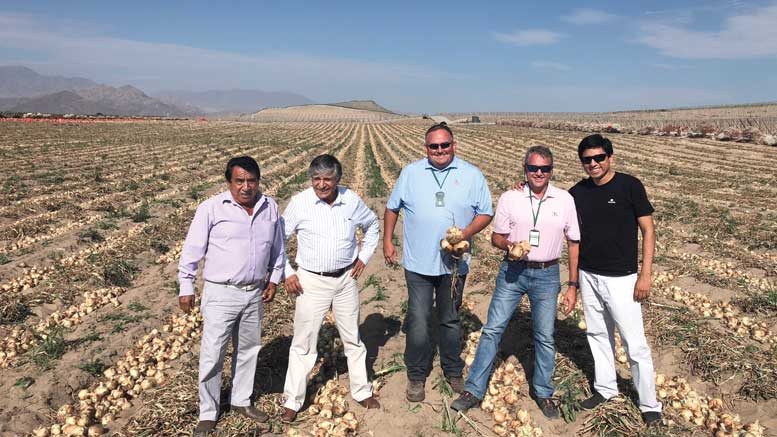|
Click to listen to this article
|
Story by Denise Keller, Editor
Photos courtesy G&R Farms
A willingness to try something new on the farm comes easier to some than others.
With a background in university extension and research, a little experimentation in production practices is well within Cliff Riner’s comfort zone. Soon after swapping his career at the University of Georgia for one at G&R Farms, Riner began coupling his research skills with the farm’s longstanding history in Vidalia onion production and is now seeing positive changes in the farm’s soil health and crop production.
G&R Farms, owned by Robert, Pam and Walt Dasher, grows onions, corn, peanuts, cotton and soybeans in Glennville, Georgia. In addition, G&R raises cattle, manages several thousand acres of timberland and conducts forest management for other landowners.

The farm’s claim to fame, however, is growing Vidalia onions since 1945, according to Riner. The farm’s Vidalia crop is planted on 850 acres, including 50 to 60 acres of organic ground. Vidalias are marketed from mid-April through August.
In 2009, G&R Farms began importing Peruvian onions and now imports 800 container ships of onions from Peru to market in late summer through the winter. Between the Peruvian imports and the Vidalia crop, G&R Farms is a year-round supplier of sweet onions.
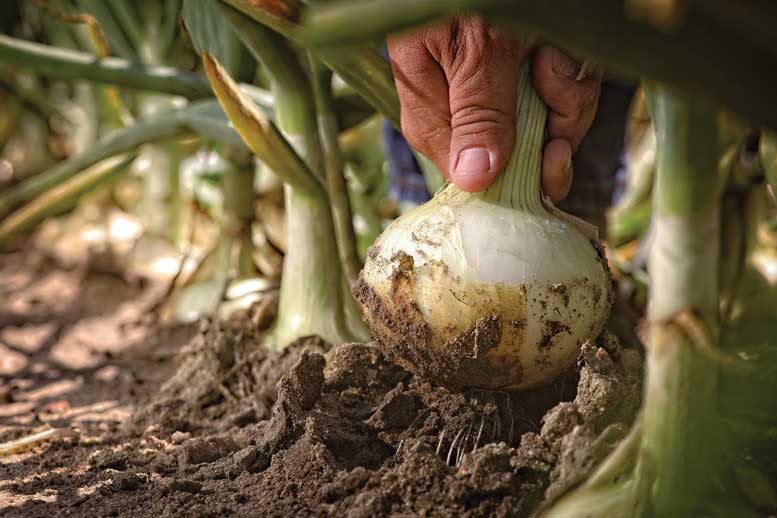
Making Adjustments
Riner joined G&R Farms as the director of crop production in the summer of 2018. But his onion career began while attending the University of Georgia. As a student, he worked at the Vidalia Onion and Vegetable Research Center during the summer and did vegetable research during the school year. After graduation, he worked as a Tattnall County extension agent in the main hub of Vidalia onion production for seven years. He then spent five years at the research center as an area extension specialist for onions, overseeing the state’s onion production and coordinating research.
Having always enjoyed the farming aspect of his career, he saw the job opening at G&R Farms as a good opportunity. Now in his fourth onion season, he finds himself approaching problems in the field similar to a research project, developing a hypothesis, parameters and a game plan.
“My job for a lot of years was to try new things, and for a lot of farmers, that’s not what they’re used to. They’re doing what they know or what they’ve seen a neighboring farmer do or their father do. It’s not that I’m doing anything really risky; it’s just something that’s just slightly different,” Riner says.
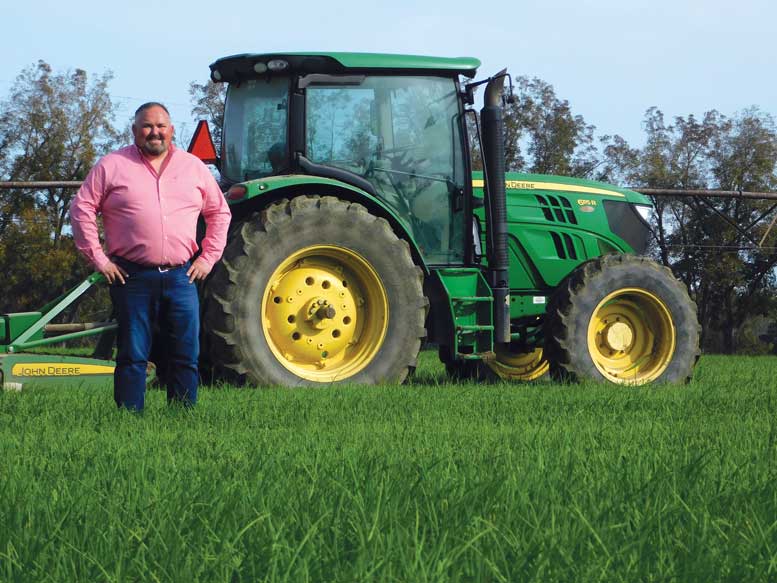
His primary objective at G&R Farms is to grow the best onions. To that end, he tries to micromanage practices that influence quality – from variety selection to planting date and soil type to fertility.
“We’re striving hard to really manage the soil as a resource through cover crops and crop rotation,” Riner says. “If we grow a crop of corn or a cover crop, it’s by prescription to make that field better to grow onions.”
Since land is not a limiting factor for G&R Farms, Riner is working toward the goal of growing onions on a three-year rotation. Onion production is pretty intensive in the area, he says, and back-to-back onion crops are typical.
He is also incorporating grass and summer cover crops based on each field’s needs. Goals include increasing organic matter and reducing runoff and erosion. Sunn hemp, sorghum-sudangrass, pearl millet, brown top millet and other species are being utilized in an effort to eliminate nematodes and certain weeds.
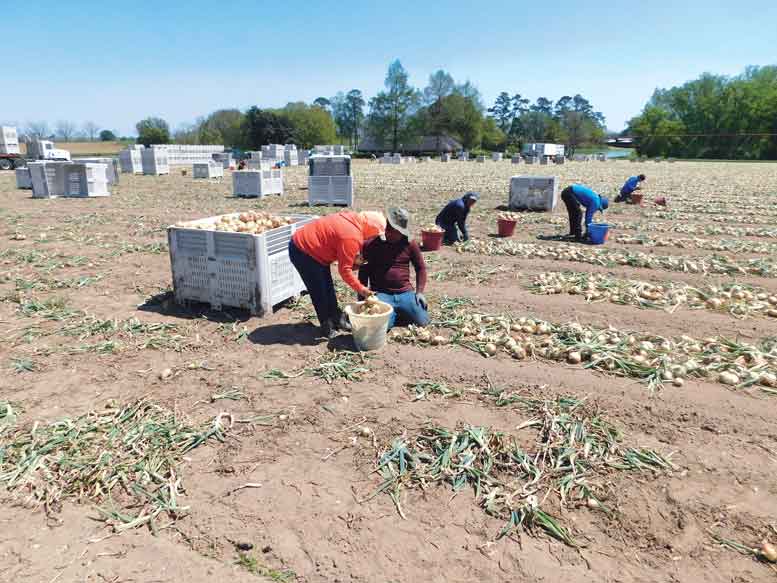
Weed control has improved, and the increased organic matter has improved soil tilth. The yield and quality of onions and other row crops is also improving, mostly due to the increased nematode control. Next, Riner plans to add winter cover crops on land not planted in onions.
“Most of the things we do that we’ve found to work, I’ve learned from being a county agent,” Riner says, noting that he’s able to apply his past experience in onions, as well as other commodities. “What worked for a certain thing on another crop, if it’s not currently being done on onions, we’ll try things cross discipline.”
He adds that it has been helpful that G&R is an established farm with a documented history to serve as a resource when considering making a change.
“That’s a big plus for somebody who analyzes data is to have some history. They’ve done a good job prior to me coming on board of keeping records of what has worked well and not worked well on the farm. I have a lot of tools in my tool chest already here,” Riner says. “They’ve got good equipment, a good team already here in place. My job is to come in with a fresh set of eyes and do some tweaks that will hopefully enhance everything.”

Challenges and Opportunities
Vidalia onions are a labor-intensive crop for G&R Farms. The season starts with 40 to 45 acres of seed bed production the first of September. Following the incorporation of the summer cover crops, crews begin transplanting the seedlings the first week of November and finish mid-December. The short-day overwintering onions are harvested from April through mid-May.
The labor to make this all happen is becoming increasingly difficult to find and keep. Agricultural employers struggle to offer the type of positions people want to work in long term, Riner says.
For the last several years, the H-2A program has been critical to operations at G&R Farms. The farm employs 90 H-2A workers at planting and 120 at harvest. A local crew of 20 also helps on the farm, and 45 fulltime employees work in the packing shed.
“The unknowns of labor are a big worry,” Riner says. “We feel proud that we’ve developed longstanding relationships that improve retention, but there are continued hurdles. We will continue to look for ways to expand workforce development opportunities for all of our employees to see that we can continue to operate fully staffed because our workers are the backbone of our success.”
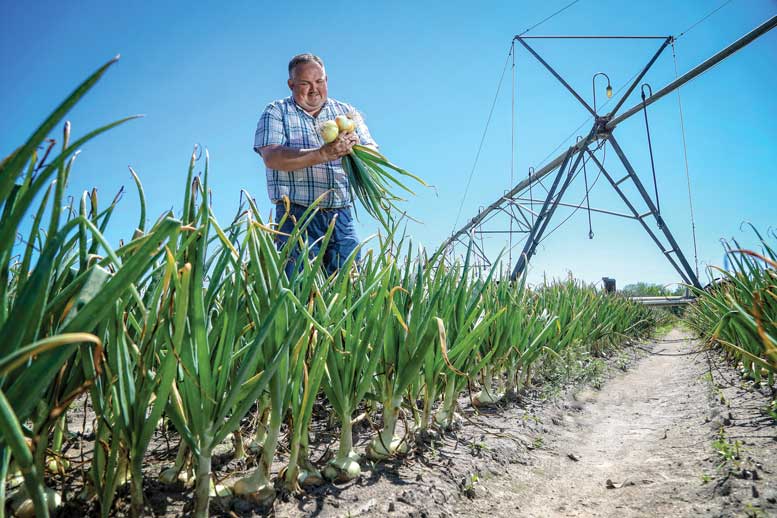
Seed availability is another concern for Riner. Seed companies are consolidating, and sweet onions are a smaller category and difficult to breed. With this in mind, Riner worries corporate seed companies could put their sweet onion programs on the chopping block. He says growers need as many options as possible, and he wants to encourage breeders to continue developing short-day onion options.
Looking ahead, Riner says G&R Farms plans to “maintain smart growth” and grow as its clients and partners need the farm to grow. Riner, who serves as the vice-chair of the Vidalia Onion Committee and a board member of the Georgia Fruit and Vegetable Growers Association, expects the onion industry to experience continued growth, as well. Vidalia onions and other sweet onions have been gaining popularity, he says, as more people find uses for them in their cooking. Increased interest in healthy eating and more demand for American-grown produce will also help boost onion sales.
“The younger generations want to be educated. They’re inquisitive of how food is being produced, and they’re completely naïve, as well,” Riner says. “So it’s up to the farm to educate the future consumers on how we produce that food and where it comes from so we can build a relationship with our consumers. We want them to know us as real people that produce real food.”

